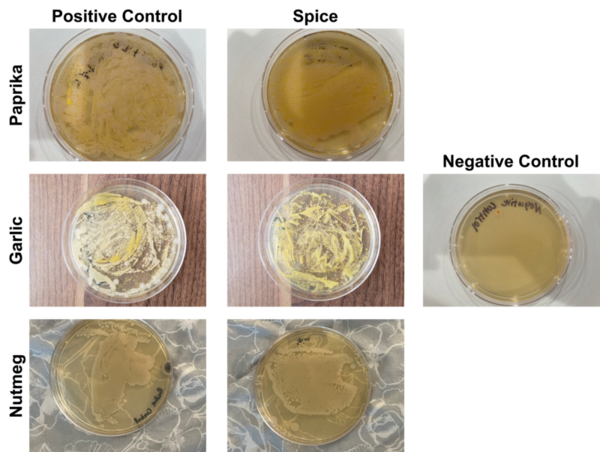Testing antimicrobial properties of common household spices in a real-world scenario
(1) Blackman Middle School, Murfreesboro, Tennessee, (2) Woodrow Wilson Middle School, Edison, New Jersey, (3) Somers Middle School, Somers, New York, (4) Harvard University, Cambridge, Massachusetts , (5) Emory University, Atlanta, Georgia
* These authors made equal contributions
https://doi.org/10.59720/22-249
Proper disinfection of household items is essential to prevent illness, especially with respect to kitchen items. However, many currently used household cleaners are toxic. Accidental poisonings from common chemical cleaners thus represent a significant threat to humans and have been exacerbated by the pandemic. Thus, there is a pressing need to find safer alternatives to these cleaning products. Spices could be useful in this respect, given their relative safety when ingested, wide availability, and potent antimicrobial properties. To date, studies have tested antimicrobial properties of a variety of spices in conditions that are different from how they would be implemented as cleaners. We therefore sought to test antimicrobial properties of spices in a real-world scenario, by quantifying microbial growth before and after cleaning a cutting board with garlic, nutmeg, or paprika. These spices were found to be relatively ineffective at cleaning cutting boards, as evidenced by similar levels of microbial growth before and after cleaning, though some of these effects appeared to be microbe and spice dependent. Overall, we demonstrate caution with the currently described method of repurposing spices for cleaning purposes but encourage further work to this end.
This article has been tagged with: